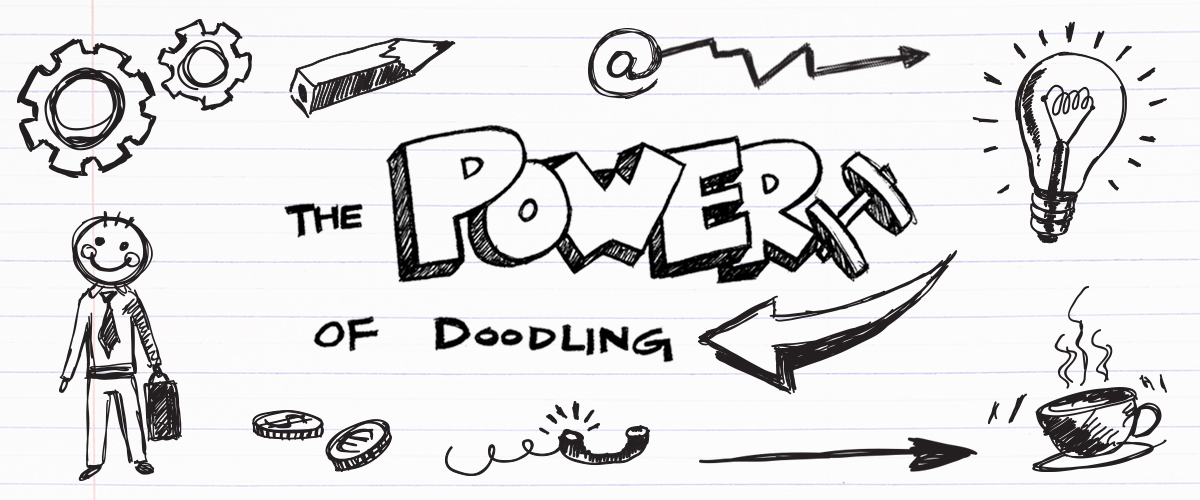
The Power of Doodling
Friday September 12th, 2014Commonly viewed as a symptom of boredom or inattention, doodling actually has the power to affect how you process and retain information.
In the business world it can be hard to retain all of the information you hear. You’ve been there – sitting in a long meeting, on the verge of zoning out. So, you grab the closest pen and begin to mindlessly doodle letters or shapes. Anything to keep you busy.
Commonly viewed as a symptom of boredom or inattention, it’s no surprise that doodling is met with disapproval. But people wrongly assume that someone’s brain is inactive when they’re doodling. In reality, the brain is designed to constantly process information. So when it lacks sufficient stimulation, it goes on the hunt for something to think about.
Doodling has a great impact on your ability to process information.
Some people compare doodling to daydreaming, but they are not the same. Daydreaming requires much of the brain’s processing power, activating the cortical networks that interfere with your concentration. Doodling, however, is an activity in which your brain expends just enough energy to keep it from daydreaming, but not enough to lose focus.
Doodling has a great impact on your ability to process information. It’s so effective that Bill Gates doodles during meetings. It engages the “default networks” in your brain, helping you avoid loss of focus when confronted with complex ideas and concepts.
These random scribbles are a wonderful creative tool that help you stimulate your creativity, process and retain information, and solve problems.
Doodling Helps You Better Retain Information
It’s believed that there are four main modalities of learning: auditory, kinesthetic, tactile, and visual. In order for the brain to learn and retain new information, at least two of those modalities need to be simultaneously engaged. Doodling is such a resourceful activity because it engages every modality at the same time.
Drawing on a piece of paper allows your mind to slow down and focus on the present experience – giving you a more saturated and sensory experience.
This supplemental activity can also improve your memory. Think of a doodle as a postcard from a recent vacation. You may not remember the specifics of the entire trip, but looking at the image helps your brain remember the details of the trip that aren’t necessarily depicted by the photograph.
With the available technology today, many people resort to using computers as a way to increase efficiency. However, writing freehand increases activity in parts of the brain that remain inactive while typing. The effort of writing engages the brain’s motor pathways. In fact, evidence suggests that even writing by hand – let alone doodling – helps you more successfully generate ideas and retain information.
Despite the negative stigma, give doodling a legitimate chance. It’s a very productive problem solving and brainstorming tool – enabling your imagination to immediately respond to what you’re seeing or hearing. So the next time you find yourself wandering into a daydream, rather than thinking about your next client project, get your head back into the game by doodling. You may just spark your next great idea!